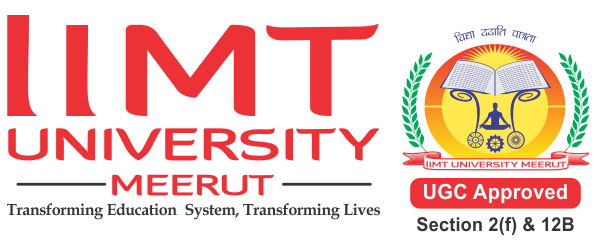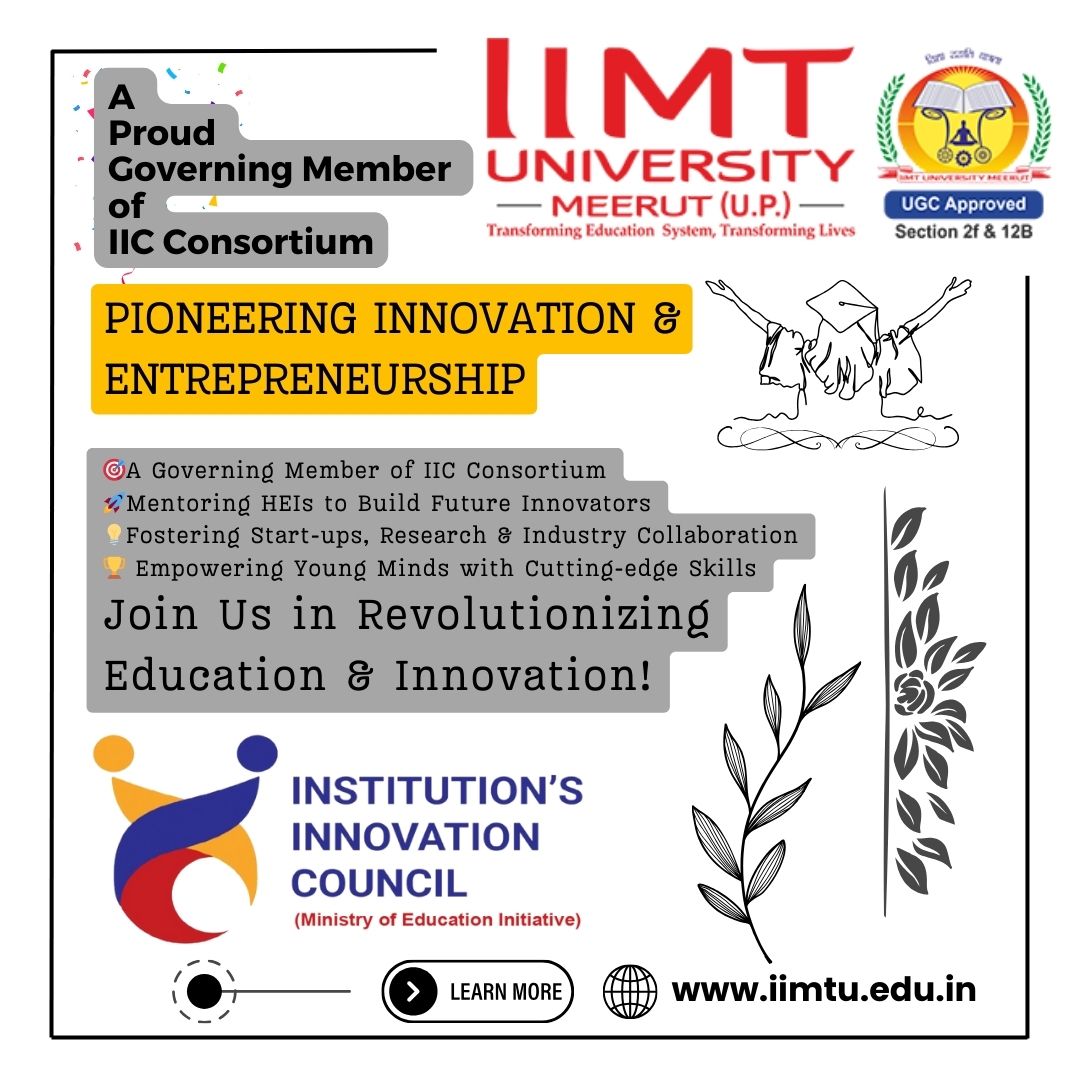Introduction
The Common University Entrance Test (CUET) has become a pivotal part of higher education in India, offering students a unified platform to gain admission to numerous prestigious universities. With the CUET, the landscape of university admissions has significantly changed, emphasizing the importance of standardized testing. This article aims to provide a comprehensive guide on the CUET university list for 2024, covering everything from the exam itself to detailed insights into the universities that accept CUET scores.
What is CUET?
CUET, or the Common University Entrance Test, is a standardized test conducted by the National Testing Agency (NTA) in India. Its primary purpose is to streamline the admission process for undergraduate programs across central, state, deemed, and private universities in India. Established to create a uniform platform for university admissions, CUET ensures that students are evaluated based on a common criterion, thus promoting fairness and transparency in the selection process.
History and Development
CUET was introduced as a part of the National Education Policy 2020, which aimed at reforming the higher education sector in India. The first CUET was conducted in 2022, and since then, it has gained substantial acceptance among universities and students alike. The test is designed to assess a student’s knowledge, aptitude, and skills across various subjects, providing a holistic evaluation of their academic capabilities.
Key Features of CUET
- Standardization: CUET offers a standardized testing platform, ensuring equal opportunities for all students.
- Wide Acceptance: A large number of central, state, deemed, and private universities accept CUET scores for admissions.
- Comprehensive Assessment: The exam covers a wide range of subjects, allowing students to showcase their strengths in multiple areas.
- Transparency: The use of a common test reduces biases and promotes transparency in the admission process.
Eligibility Criteria
To be eligible for CUET, students must meet certain criteria set by the NTA. These criteria vary depending on the course and the university they are applying to.
Basic Eligibility Requirements
- Educational Qualification: Students must have completed their higher secondary education (10+2) or equivalent from a recognized board.
- Minimum Marks: A minimum percentage of marks in the qualifying examination, usually around 50% for general category students and 45% for reserved categories.
- Age Limit: There is typically no age limit for appearing in CUET, but specific courses or universities might have their own age criteria.
Specific Criteria for Different Courses
Different universities and courses might have additional eligibility requirements. For instance, certain courses in science or engineering might require students to have studied specific subjects in their higher secondary education. It is essential to check the specific eligibility criteria of the desired course and university.
Registration Process
The registration process for CUET is straightforward but requires careful attention to detail to ensure all steps are completed correctly.
Steps to Register for CUET
- Visit the Official Website: Start by visiting the official CUET website.
- Create an Account: Register by providing basic details like name, email, and mobile number.
- Fill the Application Form: Complete the application form with personal, academic, and contact information.
- Upload Documents: Upload scanned copies of required documents such as photographs, signature, and academic certificates.
- Pay the Application Fee: Pay the application fee online using a credit/debit card or net banking.
- Submit the Form: Review all the details and submit the application form.
Important Dates and Deadlines
It is crucial to keep track of important dates such as the start and end of the application process, the release of admit cards, and the examination dates. Missing these deadlines can result in disqualification from the exam.
Documents Required for Registration
- Recent passport-sized photograph
- Scanned copy of signature
- Mark sheets of Class 10 and 12
- Valid ID proof (Aadhaar card, passport, etc.)
- Category certificate (if applicable)
Exam Pattern
Understanding the exam pattern is vital for effective preparation. The CUET exam is designed to test a wide range of skills and knowledge.
Structure of the Exam
- Sections: The exam typically includes sections on language, domain-specific subjects, and general aptitude.
- Mode: The exam is conducted online as a computer-based test (CBT).
- Duration: The total duration of the exam is usually 3 hours.
- Medium: The test is available in multiple languages to accommodate students from different regions.
Types of Questions
- Multiple Choice Questions (MCQs): Questions with four options, where only one is correct.
- Subjective Questions: Some sections might include short answer questions, though this is less common.
Duration and Marking Scheme
- Total Marks: The exam is usually scored out of 600 marks.
- Marking Scheme: Typically, 1 mark is awarded for each correct answer, and there might be a negative marking of 0.25 marks for each incorrect answer.
- Time Allocation: Each section is timed separately, ensuring that students manage their time effectively.
Syllabus
The syllabus for CUET is comprehensive, covering various subjects based on the course and university requirements.
Detailed Syllabus for Different Subjects
- Language: English, Hindi, and other regional languages. Focus on grammar, vocabulary, and comprehension skills.
- Domain-Specific Subjects: Physics, Chemistry, Mathematics, Biology, History, Geography, Political Science, Economics, etc. Each subject covers topics from the higher secondary curriculum.
- General Aptitude: Logical reasoning, quantitative aptitude, general awareness, and analytical skills.
Topics Covered in Each Subject
- Physics: Mechanics, Electricity and Magnetism, Optics, Thermodynamics, Modern Physics.
- Chemistry: Organic Chemistry, Inorganic Chemistry, Physical Chemistry.
- Mathematics: Algebra, Calculus, Geometry, Trigonometry, Statistics.
- Biology: Botany, Zoology, Genetics, Ecology.
- History: Ancient, Medieval, and Modern History.
- Geography: Physical Geography, Human Geography, Environmental Geography.
- Political Science: Political Theories, Indian Constitution, International Relations.
- Economics: Microeconomics, Macroeconomics, Indian Economy.
Preparation Tips for Each Section
- Language: Regular reading and practice of comprehension passages, grammar exercises, and vocabulary building.
- Domain-Specific Subjects: Thorough understanding of the higher secondary curriculum, practice of previous years’ question papers, and taking mock tests.
- General Aptitude: Solving puzzles, practicing quantitative problems, and staying updated with current affairs.
Top Universities Accepting CUET Scores
Several top universities across India accept CUET scores for admission to their undergraduate programs. Here is an overview of some of these universities, highlighting their key features and courses offered.
List of Universities
- University of Delhi
- Jawaharlal Nehru University
- Banaras Hindu University
- Aligarh Muslim University
- University of Hyderabad
- Jamia Millia Islamia
- University of Calcutta
- University of Mumbai
- University of Madras
- Osmania University
- IIMT University
Highlights of Each University
- University of Delhi: Renowned for its diverse courses and vibrant campus life. Offers a wide range of undergraduate programs in arts, science, and commerce.
- Jawaharlal Nehru University: Known for its strong emphasis on research and social sciences. Offers undergraduate programs in various disciplines.
- Banaras Hindu University: One of the oldest universities in India, offering comprehensive courses in arts, science, and technology.
- Aligarh Muslim University: Offers a wide range of programs with a focus on cultural diversity and inclusive education.
- University of Hyderabad: Known for its research-oriented programs and strong emphasis on interdisciplinary studies.
- IIMT University: Offers innovative and industry-relevant programs in fields such as engineering, management, pharmacy, law, and more. Known for its state-of-the-art infrastructure and focus on holistic education.
Courses Offered by Each University
- University of Delhi: B.A., B.Sc., B.Com, B.Tech, B.Ed.
- Jawaharlal Nehru University: B.A. (Hons) in various languages, B.Sc., integrated M.Sc.
- Banaras Hindu University: B.A., B.Sc., B.Com, B.Tech, B.Pharm.
- Aligarh Muslim University: B.A., B.Sc., B.Com, B.Tech, B.Arch.
- University of Hyderabad: B.Sc., B.A., integrated M.Sc., integrated M.A.
- IIMT University: B.Tech, B.Pharm, BBA, BCA, B.Com, B.Sc., B.A. (Journalism and Mass Communication), LLB.
Central Universities
Central universities hold a significant position in India’s higher education system, known for their high academic standards and extensive research opportunities.
Overview of Central Universities Accepting CUET 
Central universities are funded by the Central Government and are spread across different states. They offer a wide range of undergraduate, postgraduate, and doctoral programs.
Key Features and Programs
- Autonomous Status: These universities have autonomous status, allowing them to design their curricula and conduct exams independently.
- Research Opportunities: Strong focus on research with numerous grants and funding opportunities.
- Diverse Programs: Wide range of programs in arts, science, commerce, engineering, and technology.
Admission Process for Central Universities
Admission to central universities through CUET involves the following steps:
- Application Submission: Submit an application to the university, specifying the CUET score.
- Merit List: Universities release a merit list based on CUET scores.
- Counseling: Attend the counseling session for seat allocation.
- Document Verification: Verify academic and personal documents.
- Fee Payment: Pay the admission fee to confirm the seat.
State Universities
State universities play a crucial role in providing higher education to students across different states, often offering courses tailored to regional needs and industries.
Overview of State Universities Accepting CUET
State universities are funded by the state governments and offer a variety of programs in different disciplines. They cater to the educational needs of the local population and often have a more regional focus.
Key Features and Programs
- Regional Focus: Courses and programs designed to meet the local industry and cultural requirements.
- Affordability: Generally more affordable compared to private universities.
- Wide Range of Programs: Offer undergraduate, postgraduate, and doctoral programs in various fields.
Admission Process for State Universities
The admission process for state universities through CUET typically involves:
- Application: Submit an application with CUET scores to the desired state university.
- Merit List: Universities publish a merit list based on CUET scores and other criteria.
- Counseling: Participate in the counseling process for seat allocation.
- Document Verification: Provide necessary documents for verification.
- Enrollment: Complete the enrollment process by paying the requisite fees.
Deemed Universities
Deemed universities are institutions of higher education in India that have been granted the status of a university by the Department of Higher Education.
Overview of Deemed Universities Accepting CUET
Deemed universities are recognized for their high academic standards and autonomy in curriculum design and admission processes.
Key Features and Programs
- Autonomy: These universities have significant autonomy in academic matters, allowing them to innovate in curriculum design and research.
- Specialized Programs: Often known for specialized programs in fields like engineering, management, and technology.
- High Standards: Maintain high academic and infrastructural standards.
Admission Process for Deemed Universities
The admission process for deemed universities via CUET includes:
- Application Submission: Apply with CUET scores.
- Entrance Test (if applicable): Some deemed universities might conduct their own entrance tests or interviews.
- Merit List: Release of a merit list based on CUET scores and other criteria.
- Counseling: Participate in the counseling process.
- Document Verification and Fee Payment: Complete the admission formalities.
Private Universities
Private universities offer a range of programs and are known for their modern infrastructure and industry connections.
Overview of Private Universities Accepting CUET
Private universities are self-financed institutions that provide quality education with a focus on industry-relevant skills and employability.
Key Features and Programs
- Modern Infrastructure: State-of-the-art facilities and infrastructure.
- Industry Connections: Strong linkages with industries for internships and placements.
- Innovative Programs: Offer innovative and interdisciplinary programs.
Admission Process for Private Universities
The admission process for private universities through CUET generally involves:
- Application: Submit an application with CUET scores.
- Entrance Test (if applicable): Some private universities might conduct additional entrance tests or interviews.
- Merit List: Based on CUET scores and other criteria.
- Counseling: Attend counseling sessions for seat allocation.
- Enrollment: Complete the enrollment process.
International Universities
Some international universities have started recognizing CUET scores for admission to their undergraduate programs, providing a global platform for Indian students.
Overview of International Universities Accepting CUET
International universities accepting CUET scores are generally those that have collaborations or partnerships with Indian educational bodies.
Key Features and Programs
- Global Exposure: Opportunity to study in a multicultural environment.
- Collaborative Programs: Joint programs and exchange opportunities with Indian universities.
- High Academic Standards: Known for their rigorous academic standards and research opportunities.
Admission Process for International Universities
The admission process for international universities through CUET includes:
- Application: Apply with CUET scores and additional documents required by the international university.
- Interview (if applicable): Some universities may conduct interviews or additional assessments.
- Merit List: Based on CUET scores and other criteria.
- Visa Process: Complete the necessary visa procedures.
- Enrollment: Finalize enrollment by completing all formalities.
How to Choose the Right University
Choosing the right university is a critical decision that impacts a student’s academic and professional future.
Factors to Consider
- Academic Reputation: The university’s reputation in the desired field of study.
- Location: Proximity to home, climate, and cultural fit.
- Facilities: Quality of infrastructure, libraries, laboratories, and recreational facilities.
- Cost: Tuition fees, accommodation, and other expenses.
- Placement Opportunities: The university’s track record in placements and internships.
Tips for Making an Informed Decision
- Research: Gather information about the universities and their programs.
- Visit Campuses: If possible, visit the campuses to get a feel of the environment.
- Seek Advice: Talk to current students, alumni, and academic counselors.
- Consider Future Goals: Align the university’s offerings with your career aspirations.
Application Process
Understanding the application process for CUET and the respective universities is essential for timely and successful submissions.
Step-by-Step Guide to Applying for CUET
- Registration: Register on the CUET official website.
- Fill Application Form: Provide personal and academic details.
- Upload Documents: Upload necessary documents like photographs, signatures, and academic certificates.
- Pay Application Fee: Pay the application fee through online payment modes.
- Submit Application: Review and submit the application form.
Important Documents Required
- Photograph and Signature: Recent passport-sized photograph and scanned signature.
- ID Proof: Aadhaar card, passport, or any other valid ID proof.
- Academic Certificates: Mark sheets of Class 10 and 12.
- Category Certificate (if applicable): SC/ST/OBC/EWS certificate.
Application Deadlines
Keep track of the application deadlines to avoid last-minute hassles. Deadlines are usually announced on the official CUET website and the respective university portals.
Scholarships and Financial Aid
Financial support can make higher education more accessible and affordable for students.
Scholarships Available for CUET Students 
- Merit-Based Scholarships: Awarded based on academic performance in CUET.
- Need-Based Scholarships: For students from economically weaker sections.
- University-Specific Scholarships: Offered by individual universities based on various criteria.
How to Apply for Scholarships
- Research: Identify available scholarships and their eligibility criteria.
- Prepare Documents: Gather necessary documents like CUET scorecard, academic certificates, and proof of income.
- Submit Applications: Apply through the university’s scholarship portal or directly to the scholarship provider.
Financial Aid Options and Tips
- Student Loans: Explore government and private loans for education.
- Work-Study Programs: Some universities offer work-study programs to help students earn while they learn.
- Financial Planning: Budget effectively to manage tuition fees and living expenses.
Counseling and Seat Allotment
The counseling and seat allotment process is a crucial step in securing admission to the desired university.
Overview of the Counseling Process
- Registration: Register for the counseling process on the official website.
- Choice Filling: Fill in preferences for courses and universities based on CUET scores.
- Seat Allotment: Seats are allotted based on merit and preferences.
- Document Verification: Verify academic and personal documents.
Steps Involved in Seat Allotment
- Registration: Register online for the counseling process.
- Choice Filling and Locking: Select and lock preferred courses and universities.
- Seat Allotment Result: Check the seat allotment result online.
- Reporting to the University: Report to the allotted university for document verification and fee payment.
Important Dates and Deadlines
Keep track of key dates for registration, choice filling, seat allotment, and reporting to avoid missing any crucial steps.
Preparation Tips for CUET
Effective preparation is key to performing well in CUET and securing admission to a top university.
Study Plan and Time Management
- Create a Schedule: Develop a study schedule that covers all subjects and topics.
- Set Goals: Set daily, weekly, and monthly study goals.
- Time Management: Allocate specific time slots for each subject and stick to the schedule.
Recommended Books and Resources
- NCERT Books: Cover the basics and fundamentals of each subject.
- Reference Books: Use additional reference books for in-depth study.
- Online Resources: Utilize online lectures, tutorials, and practice tests.
Tips from Past Successful Candidates
- Consistent Practice: Regular practice and revision are crucial.
- Mock Tests: Take mock tests to simulate exam conditions and identify weak areas.
- Healthy Routine: Maintain a healthy study routine with regular breaks and adequate sleep.
Mock Tests and Practice Papers
Mock tests and practice papers play a vital role in preparation by providing a real-time exam experience.
Importance of Mock Tests
- Exam Simulation: Mimic actual exam conditions to reduce anxiety.
- Identify Weak Areas: Highlight areas that need improvement.
- Time Management: Improve speed and accuracy in answering questions.
Where to Find Practice Papers
- Official Website: Check the CUET official website for sample papers.
- Coaching Institutes: Many coaching institutes provide practice papers.
- Online Platforms: Numerous educational websites offer free and paid practice tests.
How to Effectively Use Mock Tests for Preparation
- Regular Practice: Take mock tests regularly to build confidence.
- Review Answers: Analyze mistakes and understand the correct answers.
- Improve Strategy: Adjust study plans and strategies based on mock test performance.
Common Mistakes to Avoid
Avoiding common mistakes can significantly improve performance in CUET.
Common Pitfalls During Preparation
- Procrastination: Avoid delaying study schedules and stick to the plan.
- Ignoring Weak Areas: Focus on improving weak subjects and topics.
- Overconfidence: Balance preparation across all subjects instead of focusing on strengths alone.
Mistakes to Avoid During the Exam
- Misreading Questions: Read questions carefully before answering.
- Time Mismanagement: Allocate time wisely to avoid rushing through sections.
- Negative Marking: Be cautious with guessing answers due to negative marking.
Tips for a Smooth Examination Experience
- Preparation: Arrive well-prepared with all necessary documents and stationery.
- Calm Mindset: Stay calm and composed during the exam.
- Focus: Concentrate on one question at a time and avoid distractions.
Exam Day Guidelines
Following the guidelines for exam day ensures a smooth and hassle-free experience.
What to Bring to the Exam Center
- Admit Card: Print and carry the CUET admit card.
- ID Proof: Carry a valid photo ID (Aadhaar card, passport, etc.).
- Stationery: Bring necessary stationery like pens, pencils, erasers, and a clipboard.
- Water Bottle: Carry a clear water bottle for hydration.
Do’s and Don’ts on Exam Day
- Do’s:
- Arrive at the exam center well in advance.
- Follow all instructions given by the invigilators.
- Keep a positive attitude and stay focused.
- Don’ts:
- Do not carry any prohibited items like electronic devices.
- Avoid discussing questions with other candidates during the exam.
- Do not leave the exam hall before the designated time.
How to Handle Exam Day Stress
- Relaxation Techniques: Practice deep breathing or meditation to stay calm.
- Positive Visualization: Visualize a successful exam experience to build confidence.
- Healthy Routine: Ensure a good night’s sleep and a healthy meal before the exam.
Result Declaration
The declaration of CUET results is a crucial step that determines the next phase of the admission process.
How and When Results are Declared
- Official Website: Results are declared on the official CUET website.
- Date: Typically announced a few weeks after the exam.
- Notification: Students receive notifications via email or SMS.
Steps to Check Results
- Visit the Official Website: Go to the CUET result portal.
- Login: Use the registration number and password to log in.
- View Result: Check the result and download the scorecard.
- Print Scorecard: Print the scorecard for future reference.
What to Do After Receiving Results
- Evaluate Options: Assess university options based on the score.
- Apply to Universities: Submit applications to desired universities with the CUET scorecard.
- Prepare for Counseling: Get ready for the counseling process by gathering necessary documents.
Cut-off Marks
Cut-off marks play a critical role in determining eligibility for admission to various universities.
What are Cut-off Marks
- Definition: The minimum marks required to qualify for admission.
- Variability: Cut-off marks vary by university, course, and category.
How Cut-off Marks are Determined
- Exam Difficulty: Based on the difficulty level of the exam.
- Number of Applicants: Higher competition can raise cut-off marks.
- Seats Available: Limited seats may lead to higher cut-offs.
Expected Cut-off Marks for 2024
While exact cut-offs for 2024 can only be speculated, they are generally influenced by previous years’ trends and the factors mentioned above. Candidates should stay updated with official announcements for precise details.
Frequently Asked Questions (FAQs)
Here are some common queries regarding CUET along with their answers:
Common Queries About CUET
- What is the full form of CUET?
- Common University Entrance Test.
- Who conducts CUET?
- The National Testing Agency (NTA).
- Is CUET mandatory for all central universities?
- Yes, it is mandatory for admission to undergraduate programs in central universities.
Answers and Explanations
- Can I apply for CUET if I have a gap year?
- Yes, gap year students are eligible to apply, provided they meet the eligibility criteria.
- How many times can I attempt CUET?
- There is no limit on the number of attempts, but it is subject to the age criteria set by individual universities.
Tips for Prospective Candidates
- Stay Updated: Regularly check the official website for updates.
- Prepare Well: Follow a structured study plan and take mock tests.
- Seek Guidance: Don’t hesitate to seek help from teachers, mentors, or coaching centers.
To know more – Visit our Website
For admission related queries – Click here or call us @ 9997089170
Authored By:
Mr. Mukesh Pal













